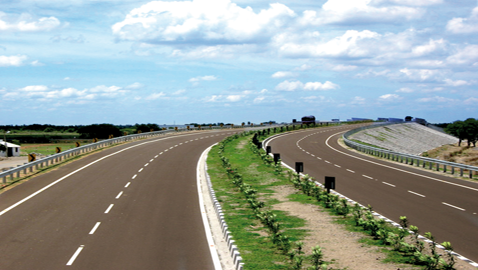
In spite of hurdles and slow pace of implementation, National Highways Authority of India has managed to complete four and six laning of nearly 23,070 km of road across the country since the launch of National Highway Development Project in 1998. Although it could have done better, given the obstacles it had to face in project execution, the achievement is nevertheless a notable one.
In the first two years of the ongoing 12th Plan (2012-2017), the enthusiasm of private companies in setting up highways through the PPP route declined sharply. While 13 out of 21 NHAI projects failed to attract bidders in 2012-13, around 21 projects offered in 2013-14 failed to get any response from private road builders. This made the Ministry of Road Transport & Highways drop the PPP route and offer the same projects under EPC mode. To ensure faster execution, NHAI also sliced its earlier highway projects into multiple packages.
Minister for Road Transport and Highways Nitin Gadkari clarified that the pace of development of national highways had slowed down due to factors such as delay in land acquisition, shifting of utilities, environmental and forest clearances, tolling issues and lack of equity with developers among others.
The prolonged delays in project execution also led to a more serious issue — dud loans. A number of nationalised banks which had extended long-term loans to road projects feared increase in their non-performing assets. To mitigate this, the government allowed road developers to sell their stakes in highway projects. Under this policy, a concessionaire wanting to exit would have to approach the lender requesting for a substitution. The lender would then have to seek NHAI’s approval and once both are satisfied, the former can seek an alternative concessionaire, through auction, tender or in consultation with the exiting developer. Such buyouts helped in completing projects that were stuck due to financial constraints. Last year alone saw around 13 such project sales (see table).
Meanwhile the switch to EPC route helped NHAI to award a couple of mega projects in 2013-14. Until November 2014, however, NHAI had offered around 11 projects on EPC basis. Earlier, these very projects were offered under PPP route. NHAI is expected to offer 39 more projects via EPC during the current fiscal. These projects are currently stalled.
Under the EPC route, a contractor builds the project by designing, installing and procuring necessary labour and land to construct the infrastructure, either directly or by subcontracting. The financing is done by the government and not by banks or private equity funds, through issue of sovereign bonds or financial guarantees for the project.
NHAI has set an award target of 5,000 km in the current fiscal. Of this, 3,500 km will be in EPC mode and 1,500 through PPP route i.e. BOT-Toll. However, in the first eight months of the fiscal, NHAI managed to award only 1,011 km of projects of which 500 km were on PPP basis.
Of the six projects awarded, the one bagged by IL&FS Engineering & Construction Company Ltd was the largest with a total outlay of Rs.1,232 crore. The contract is for four-laning of the Patna-Gaya-Dobhi section of NH-83, from km 0.00 to km 127.217, in Bihar. The project would be executed with JICA ODA loan assistance. The completion period is 1,095 days from the date of award of work.
It is estimated that NHAI would require around Rs.35,000 crore if it wants to award 3,500 km of road projects through EPC route in the current fiscal. If the trend continues and NHAI fails to find developers to take up highway projects under PPP mode, then the level of borrowing by NHAI could up to Rs.80,000 crore.
 |
Visit www.projectstoday.com |
| or | |
| call 1800-2101-213 to subscribe to ProjectsToday |
| 16 YEARS OF NHDP |
| Since 1998, the Government of India has taken up the National Highways Development Project to upgrade, rehabilitate and modernise highways in India. Public sector National Highways Authority of India is developing the projects, which are being implemented in the following phases:
Phase I: The 5,846-km long Golden Quadrilateral will connect the four major cities of Delhi, Mumbai, Chennai and Kolkata. Phase II: The 7,300-km long North-South and East-West corridor projects connect the four extreme points of the country, from Srinagar in the north to Kanyakumari in the south and Silchar in the east to Porbandar in the west. Phase III: Upgradation of 12,109 km and connectivity of state capitals via NHDP Phase I & II. Phase IV: This phase will include highways that were not part of Phase I, II or III. Phase IV will convert existing single-lane highways into two lanes with paved shoulders. Phase V: Upgradation of about 5,000 km of four-lane roads to six lanes. Phase VI: Construction of expressways connecting major commercial and industrial townships. Phase VII: Improvements to city road networks by adding ring roads to enable easier connectivity with national highways to important cities. In addition, improvements will be made to stretches of highways that require additional flyovers and bypasses. As of November 2014, NHAI was executing 470 road projects across India. These projects, together involving investment of around `1,54,144.70 crore, are being implemented either through PPP, BOT or EPC routes. |












PPP Mode is great!